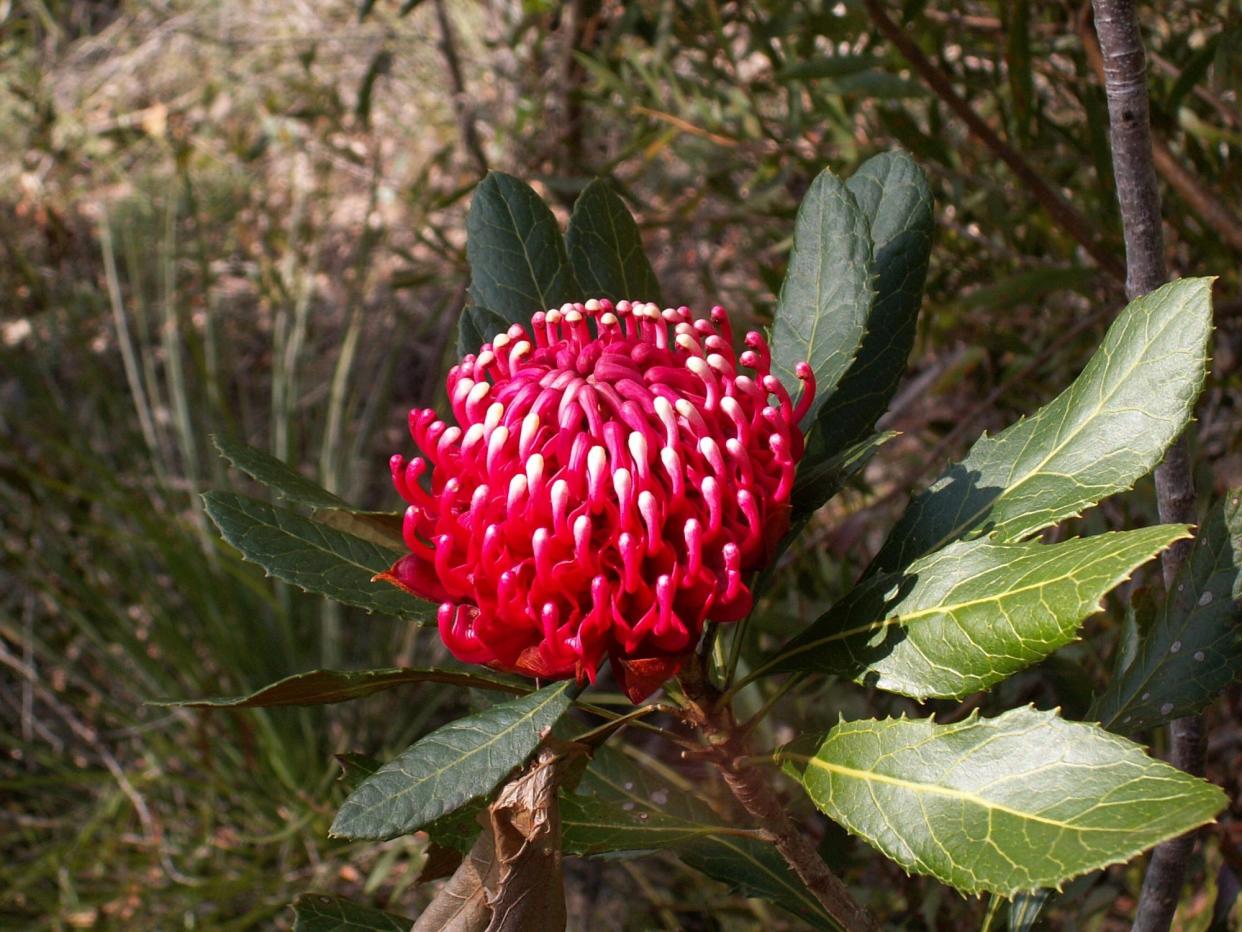‘A symbol of our nation’: waratah among 20 more species added to Australia’s threatened wildlife list

Twenty more plants and animals, including a type of waratah, have been added to Australia’s list of threatened wildlife, bringing the total number of endangered species and ecosystems to almost 2,250.
The fresh listings come as the government faces a battle to pass legislation for a new national environment watchdog in the Senate and has been under pressure from the Greens and Coalition about delays to a broader package of reforms to the country’s environment laws.
The 15 plants, two lizards, one sea snake, one crayfish and one fish recognised as threatened with extinction include the New England leaf-tailed gecko (also known as the Moritz’s leaf-tailed gecko), the granite leaf-tailed gecko, and the Gibraltar Range waratah (Telopea aspera), a species of the popular flowering shrub.
Related: Environment watchdog powers may be weakened to pass parliament, Albanese says
The Gibraltar Range waratah, listed as endangered, is a different species but similar in appearance to the more-well known New South Wales waratah (Telopea speciosissima), which is the floral emblem for that state.
One ecological community – the King Island scrub complex ecological community – was also added to the list, making a total of 21 new additions and bringing the overall list to 2,245.
The environment and water minister, Tanya Plibersek, said the biggest threats to the newly listed species were invasive weeds and pests, such as feral cats and pigs, and the ongoing effects of the black summer bushfires.
“It’s hard to imagine that the Gibraltar Range waratah – a symbol of our nation – is under threat in Australia from disease and predators,” she said.
“Our government is committed to giving our precious threatened plants and animals a brighter future. That’s why today we’ve listed 20 species and 1 ecological community under national environment law for the first time – giving them stronger protection under law.
“We are acting on the best available advice and science to better protect plants, animals and ecosystems under threat.”
The additions come a month after 13 other plants and animals were added to the list, sparking renewed calls for the federal government to quickly overhaul the country’s nature laws.
The Australian Conservation Foundation said at the time the expanding threatened species list showed the national nature laws were “powerless to stop Australian plants and animals being wilfully destroyed”.
The prime minister, Anthony Albanese, said this week that promised new nature laws were unlikely to be introduced in this term of parliament after the government decided to carve up the reforms into stages. A broader overhaul, including new national environmental standards, which was recommended by a statutory review in 2020 has been delayed to an unspecified date.
Legislation to establish a proposed national environment protection authority and a national environmental information agency is before the parliament.
The Coalition, Greens and crossbench senators are all seeking amendments to the bills.
Albanese said this week the government would consider watering down the EPA proposal in a bid to secure the Coalition’s support.
The government has said it is committed to improving environmental protections, including through $550m to protect threatened species and tackle invasive pests, expanding the Indigenous Ranger Program and protecting an additional 40m hectares of land and sea areas.
Scientists have estimated about $2bn a year is needed to recover Australia’s threatened plants, animals and ecological communities.


